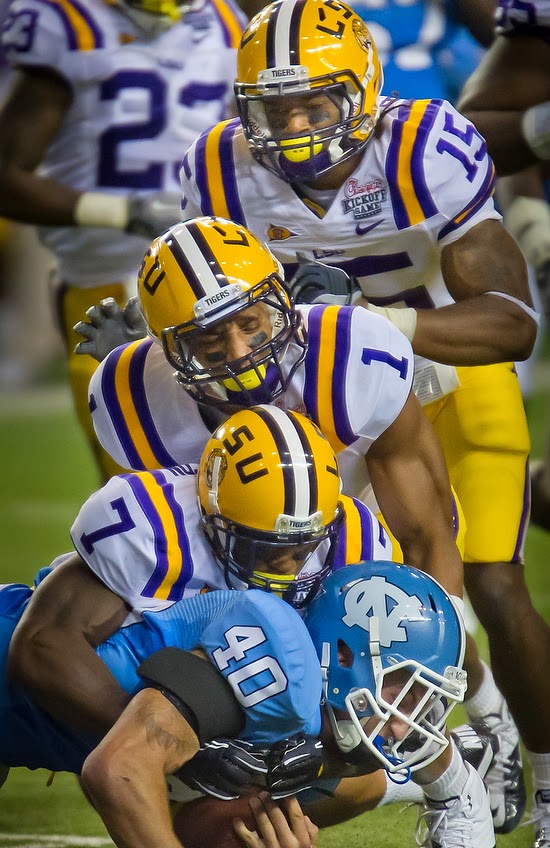 |
| Nikon D2X, Sigma 120-300mm ƒ/2.8, ISO 400, ƒ/2.8, 1/1250 |
For this blog I am just focusing on what happens on the field and not the reactions to it by fans and the sidelines.
Three things I think you should strive to have in all your action shots on the field:
- The Ball
- Expression
- The competition
While not every great sports photo will have all three, the overwhelming majority of them will have all three elements.
Definition of Sport—an activity involving physical exertion and skill in which an individual or team competes against another or others for entertainment.
 |
| Nikon D4, Sigma 120-300mm ƒ/2.8, ISO 12800, ƒ/5.6, 1/1000 |
 |
| Nikon D4, Sigma 120-300mm ƒ/2.8, ISO 12800, ƒ/5.6, 1/1000 |
I generally try to shoot way down the field in front of the teams and prefer standing in the endzones. If they are far away I just use longer glass like 600mm lens and when they are on the goal line I may switch to my 70-200mm lens.
Why the endzone? Well they are generally running in that direction and trying to cross the goal line. When you are on the sideline they may run slightly in your direction, but they could be running to the other sideline as well.
 |
| Nikon D4, Sigma 120-300mm ƒ/2.8, ISO 12800, ƒ/5.6, 1/1250 |
 |
| Nikon D3S, Sigma 120-300mm ƒ/2.8 with 1.4 converter, ISO 6400, ƒ/4, 1/2000 |
You can always rent long glass lenses rather than buying them. I recommend having between 300mm to 500mm lens coverage. This can be done with 1.4 & 2X converters.
Here is the list of gear I use in Football
- (2) Nikon D4 Cameras
- 14-24mm ƒ/2.8 Nikkor
- 28-300mm ƒ/3.5-5.6 Nikkor
- Sigma 70-200mm ƒ/2.8
- 120-300mm ƒ/2.8 DG OS HSM | S carried in the Thinktank Glass Taxi™ [not in photo]
- Sigma 1.4 converter
- Nikon SB-900
- Manfrotto 294 Aluminum 4 Section Monopod
- Manfrotto by Bogen Imaging 323 RC2 System Quick Release Adapter w/200PL-14
- ExpoDisc
- Shure FP15/83 Lavalier Wireless System
- RØDE VideoMic Pro
- Zacuto Z-Finder
- AWP Knee Pads - Important to save your knees
- ThinkTank System for lenses using belt and harness
- ThinkTank Memory Card Holder
- ThinkTank Airport Security™ V 2.0 Rolling Camera Bag
- ThinkTank Credential Holder Tall V2.0
 |
| Nikon D3S, Sigma 120-300mm ƒ/2.8 with 1.4 converter, ISO 6400, ƒ/4, 1/2000 |
Have fun shooting this fall.


No comments:
Post a Comment